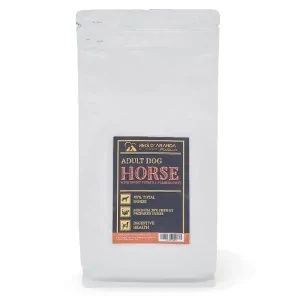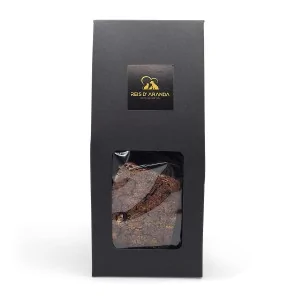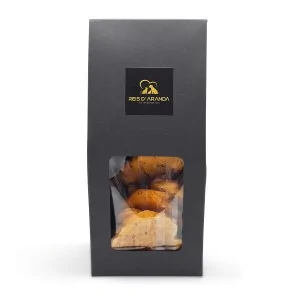Its name says it all: the Vienna blue rabbit comes from Austria. Not only is it beautiful with its shiny blue-grey...
THE AUSTRALIAN TERRIER
INTRODUCTION
The Australian terrier is one of the smaller terriers. In Australia they needed a guard dog capable of withstanding the harsh conditions of the island. For this purpose, they started with a crossbreeding of several British terrier breeds to achieve the characteristics of this particular dog.
THE ORIGIN OF THE AUSTRALIAN TERRIER
Although produced from British ancestors, the Australian Terrier is one of the few British breeds of the terrier group to have developed outside Britain. It is safe to say that it was the first breed developed in Australia. It seems reasonable to assume that both the Australian Silky Terrier and the Australian Terrier have a common ancestor from Tasmania, New South Wales and Victoria called the Broken Coated Terrier. It is believed that this type of dog originated from a mixture of British breeds which are: Skye Terrier, Scottish Terrier (Aberdeen) and Dandie Dinmont Terrier. It is reported that in the early 1800s settlers around Campbelltown and Ross in Tasmania bred rough-coated dogs with a bluish sheen and tan markings. They were popular for their prowess as guard dogs and their weight of about 10 pounds (4.5 kg).
WHAT IS THE AUSTRALIAN TERRIER LIKE?
GENERAL APPEARANCE: He is a sturdy, short-limbed dog, elongated in proportion to his height, with the strong character typical of terriers, always alert, active and solid. His rough, untrimmed coat, coupled with a well defined collar around the neck extending to the sternum and his long, strong head help to create the robust, stubborn appearance.
BEHAVIOUR/ TEMPERAMENT: In its essence, it is a working terrier, but thanks to its faithfulness and balanced character it is also a companion dog.
HEAD:
CRANIAL REGION:
SKULL: Flat, of moderate width, full between the eyes. Covered by a soft ‘ bun ’.
NASO-FRONTAL DEPRESSION (STOP): Slight, but defined.
FACIAL REGION:
TRUFFLE: Black, of moderate size, extending to the bridge of the nose.
HOCIO: Strong and powerful, of the same length as the skull. The muzzle should be strong and not fall below the eyes. The length and strength of the muzzle are essential to give power to the fearsome jaws.
LIPS: Black, tight and clean.
JAWS / TEETH: Jaws strong and fearsome. Teeth are large and evenly set, the upper incisors falling close and well in front of the lower incisors (scissor bite).
EYES: Should be small, oval, with a shrewd expression, dark brown, set wide apart and not prominent.
EARS: Small, erect, pointed, well carried, set moderately wide, not long haired and very attentive (except for puppies under 6 months of age).
NECK: Of good length, slightly arched, strong and falling smoothly over well sloping shoulders.
BODY: Long in proportion to height, strongly built. In assessing the body, attention should be paid to the description in the first paragraph where it is ‘a sturdy dog, short limbed and long in proportion to height’.
BACK: Level topline.
LOIN: Strong.
CHEST: Of moderate depth and width, with well rounded ribs. The forechest is well developed, the sternal region relatively deep.
TAIL: Traditionally docked, both docked and natural, set on high, well carried, but not carried over the back.
LIMBS
FOREQUARTERS: Seen from the front, straight and parallel, of good bone structure. The forelegs are slightly feathered to the pastern.
Pasterns: Strong, not sloping.
HANDS / FOREQUARTERS FEET: Small, round, compact, well cushioned, with tight and closed toes, moderately arched. Feet neither turned in nor out. Nails strong, black or dark.
HINDQUARTERS: Moderate length, broad. Seen from behind, the hindquarters should be parallel from hock to foot, not too wide apart or too close to each other.
THIGH: Strong and well muscled.
KNEES: Well angulated.
Hocks: Well angulated, well let down.
HIND FEET: Small, round, compact, well cushioned, toes tight and closed, moderately arched. Feet neither turned in nor out. Nails strong, black or dark.
GAIT / MOVEMENT: The action should be free, agile, springy and energetic. Viewed from the front, the forelegs should move properly without slackness of the shoulders, elbows or pasterns. The hindquarters should give drive and power, with free movement of the knees and hocks. Viewed from behind, the limbs should be parallel from hock to ground, neither too close nor too far apart.
COAT:
COAT: Consists of a straight, coarse outer coat of hair approximately 6 cm in length, with an undercoat of short hair of soft texture. The muzzle, the lower part of the limbs and the feet should be free from long hair.
COLOUR:
(a) Blue, steel blue, or dark blue-grey, with deep tan markings (not sandy) on the face, ears, lower body, lower limbs and around the anus (except puppies). The more intense and defined the colour, the better. Any black tinged patches are undesirable. The bow on the head should be blue, silver or of a lighter shade than the rest of the head.
b) Light sand or red is acceptable with a bow tie of a lighter shade. Any dark spotting or shading is undesirable.
c) In any colour, white patches on chest or feet are penalized.
SIZE AND WEIGHT:
HEIGHT AT CRUZ: The desirable height is approximately 25 cm, bitches being slightly smaller.
WEIGHT: Desirable is approximately 6.5 kg for males, bitches being slightly lighter.
FAULTS: Any departure from the foregoing points should be considered a fault and the seriousness with which the fault should be regarded should be in exact proportion to its degree and its effect upon the health and welfare of the dog.
TEMPERAMENT: No terrier lacks attitude and Aussies are no exception. These dogs are usually very attached to their family, so it is common for their character to reflect that of the people with whom they live.
Perhaps because of their protective nature, they show a greater affinity for the vulnerable. Children, the elderly and people with special abilities are among his favourites. They are good playmates, so they will get along well with children of any age. They are also very tolerant, although they also have their limit for mischief.
These dogs have absolute self-confidence and think they are bigger than they are. They tend to be territorial and dominant with other breeds, especially if they are male. A good thing is that they can learn to respect smaller animals, such as cats or rabbits, as long as they have grown up together.
Socialisation is essential for balanced adults. They also need firm and consistent training. To get them to take notice you must offer them varied exercise and constant challenges. Remember, a motivated terrier is an obedient terrier.
THE FUNCTIONS OF THE AUSTRALIAN TERRIER
Unlike a breed that is often confused with the Yorkshire Terrier, the Australian Terrier keeps intact its rodent hunting instinct, courageous personality and great vocal ability as an alarm dog, so it is not recommended to live with small pets (rabbits, guinea pigs ...) and if it does not have any access to them and security measures are strict to avoid accidents.
Nowadays this breed is still used to kill plagues of rats in the countryside and to a lesser extent it is used as a pet by active families who can give it all the mental and physical work it needs to be in perfect condition.
AUSTRALIAN TERRIER HEALTH
Among the most common ailments of the Australian Terrier are:
- Patellar luxation: Patellar luxation is one of the most common orthopaedic conditions in dogs and is diagnosed in 7% of puppies. The disease mainly affects small dogs, especially breeds such as boston and yorkshire terriers, chihuahuas, pomeranians and miniature poodles. The incidence in larger breeds has been increasing over the last ten years and breeds such as Chinese shar pei, smooth retriever, akita and Pyrenean mountain dog are now considered to be predisposed to the disease. Patellar luxation affects both knees in half of the cases, potentially leading to discomfort and loss of function. Patellar dislocation is occasionally caused by traumatic injury to the knee, resulting in sudden, severe limb lameness.
- LEGG-CALVE PERTHES SYNDROME: Legg-Calve Perthes disease (avascular necrosis of the femoral head) is a condition affecting young dogs of small, toy and miniature breeds. It causes severe pain and marked lameness of the affected limb, with muscle atrophy due to lack of support and crepitus of the joint on manipulation. It can occur in one or both hips. And the onset of symptoms is usually sudden, although the loss of muscle mass occurs gradually and may go unnoticed at first.
It is caused by a lack of blood supply, which in turn causes degeneration and necrosis of the head and neck of the femur.
The diagnosis is made by hip X-ray and the treatment of choice is surgical. Specifically, it consists of excision (‘excision’) of the affected femoral head and neck.
The prognosis after the operation is favourable if the postoperative period is correct, with the patient being able to lead a completely normal life in the vast majority of cases. patellar dislocation, a problem in the knee joints, together with Legg-Calvé-Perthes syndrome. The latter disease causes necrosis of the femoral head and usually appears between 4 and 12 months of age.
- DIABETES: Diabetes is a disease that occurs when blood glucose, also called blood sugar, is too high. Glucose is the body's main source of energy. Your body can make glucose, but glucose also comes from the food you eat.
Insulin is a hormone produced by your pancreas that helps glucose enter your cells to be used as energy. If you have diabetes, your body either does not produce insulin, does not produce enough insulin or does not use it properly. Glucose stays in your blood and does not get into your cells.
Diabetes increases the risk of damage to the eyes, kidneys, nerves and heart. Diabetes is also linked to some types of cancer. Taking steps to prevent or manage diabetes can reduce the risk of developing diabetes-related health problems.
CONCLUSION
The Australian Terrier is a little known breed in Spain but an excellent companion for farms and the rural world that easily controls pests such as moles, mice and rats. His strength and bravery totally clashes with his size, being a great companion for older children and families in the rural world.
Leave a comment
Log in to post comments
















